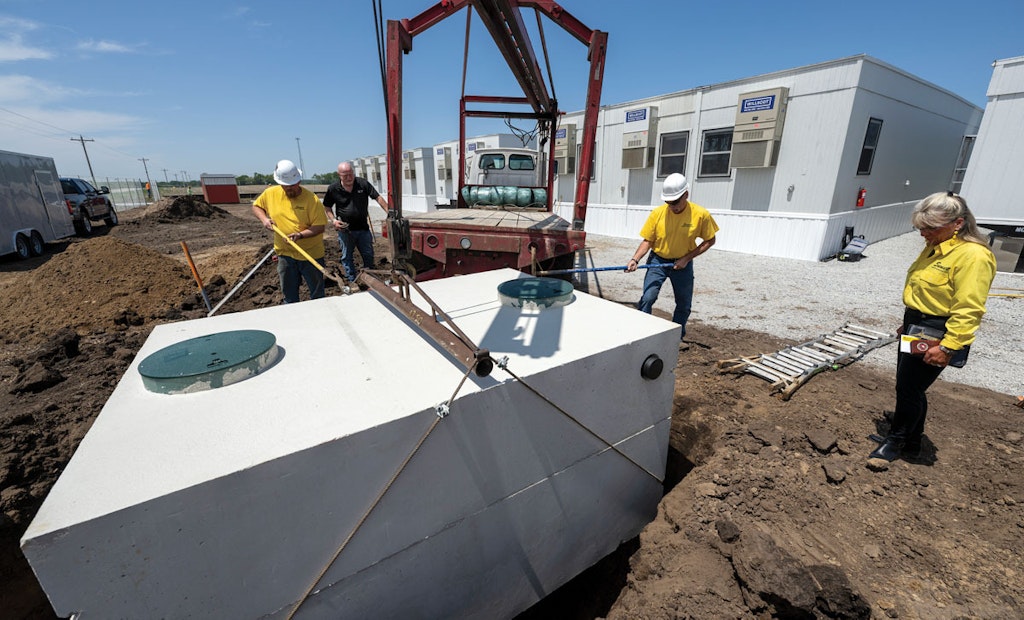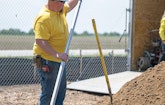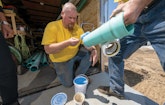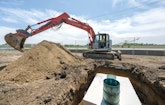
Left to right, Cody Houseknecht, a delivery driver and Jon (right) Houseknecht maneuver a septic tank into place during a recent install project. Gale Houseknecht, far right, observes. (Photos by Mark Lebryk)
When Jon and Gale Houseknecht bought a stagnant pumping business in 1995, they set about streamlining it for a new world.
They disposed of several old vacuum trucks and put their pumping equipment on a truck tractor-pulled semi-trailer that could be easily unhitched for other...











